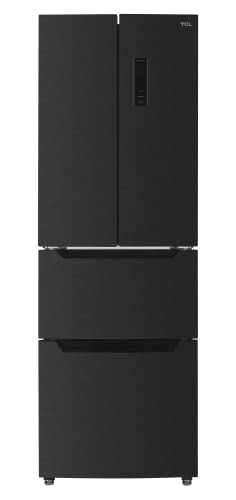9 Things Your Parents Teach You About Fridge UK
The Comprehensive Guide to Refrigerators in the UK
Fridges are an essential device in every home, serving a crucial role in food conservation and safety. The UK market uses a diverse series of fridge types, sizes, functions, and brands. This short article aims to supply a thorough understanding of refrigerators readily available in the UK, including their features, energy effectiveness, and aspects to think about when purchasing.

Kinds Of Refrigerators Available in the UK
When looking for a refrigerator, it is crucial to understand the numerous types offered. Each type comes with its own set of features and functions, catering to various requirements and choices. The most typical kinds of fridges discovered in the UK include:
1. Top Freezer Refrigerators
- Description: The traditional design, featuring the freezer compartment on top.
- Pros: More inexpensive, spacious, easy access to fresh food.
- Cons: Limited freezer area, the top may be less practical for bulk products.
2. Bottom Freezer Refrigerators
- Description: Freezer lies at the bottom, enabling simpler access to fresh food.
- Pros: Greater benefit, better presence of fresh products.
- Cons: Usually more expensive, some might struggle with big frozen products.
3. Side-by-Side Refrigerators
- Description: Features two vertical compartments, one for the fridge and one for the freezer.
- Pros: Ample storage space, easy to gain access to both frozen and fresh foods.
- Cons: Wider footprint, they might not fit in smaller cooking areas.
4. French Door Refrigerators
- Description: Combines features of bottom freezers and side-by-sides, with two doors for the fridge on top.
- Pros: Stylish style, roomy, and typically consists of innovative features.
- Cons: Higher cost point, aligns improperly with smaller kitchen area designs.
5. Compact Refrigerators
- Description: Smaller models created for minimal areas.
- Pros: Ideal for studio apartments or workplaces, energy-efficient.
- Cons: Limited storage capability, might do not have functions.
6. Integrated Refrigerators
- Description: Designed to mix perfectly with cooking area cabinetry.
- Pros: Custom fit, aesthetic appeal, increases home worth.
- Cons: Higher expense, might use less versatility in placement.
7. Smart Refrigerators
- Description: Equipped with Wi-Fi and smart technology functions.
- Pros: Advanced includes like touch screens and internal video cameras.
- Cons: Expensive, more intricate to fix.
| Refrigerator Type | Ease of access | Typical Price Range | Energy Efficiency |
|---|
| Top Freezer | Moderate | ₤ 300 - ₤ 600 | Average |
| Bottom Freezer | High | ₤ 400 - ₤ 800 | Above Average |
| Side-by-Side | Easy | ₤ 800 - ₤ 1500 | Differs |
| French Door | High | ₤ 800 - ₤ 2000 | High |
| Compact | Limited | ₤ 200 - ₤ 500 | Typical |
| Integrated | Custom-made | ₤ 1000 - ₤ 2500 | High |
| Smart | Variable | ₤ 1200+ | High |
Secret Features to Consider
- Energy Efficiency: Look for designs that are energy-efficient. In the UK, home appliances are ranked from A (most effective) to G (least effective). An A+ rating and above can cause substantial energy cost savings.
- Capability: Choose a fridge with adequate capability for your family. A basic guideline is 100-200 liters per person.
- Sound Level: Consider designs that run silently, especially if the cooking area is near living spaces.
- Cooling Technology: Features like frost-free technology are worth the financial investment, as they reduce upkeep.
- Adjustable Shelves: Having adjustable racks improves the versatility to keep bigger items.
- Temperature level Control: Check for user friendly temperature level controls and zones for various types of food.
- Design: Choose the design and color that matches your cooking area visual, whether you choose a modern-day stainless steel appearance or a classic retro surface.
Buying Tips
- Identify Your Needs: Consider your cooking routines, household size, and kitchen area area.
- Set a Budget: Refrigerators can be found in various price varieties. Establish a spending plan before you begin shopping.
- Research Study Energy Ratings: Invest in energy-efficient designs to save on utility expenses.
- Read Reviews: User experiences can supply insights into dependability and performance.
- Compare Brands: Some brands are understood for their durability while others might provide more ingenious functions.
Regularly Asked Questions (FAQs)
1. The length of time do refrigerators normally last?
- Fridges normally last between 10 to 20 years, depending on the brand name and how well they are maintained.
2. Exist any upkeep suggestions for prolonging the life of a refrigerator?
- Routinely clean the coils, check the door seals, and occasionally defrost if needed to keep ideal efficiency.
3. What is the best size refrigerator for a family of 4?
- For a family of four, a refrigerator with a capacity of around 400-600 liters is generally adequate.
4. Do I need to stress over energy consumption when purchasing a refrigerator?
- Yes, energy usage is essential. Try to find units with high energy effectiveness scores to reduce regular monthly expenses.
5. Should I select a Fridge uk with a water and ice dispenser?
- This function can be convenient, specifically for households. Nevertheless, it may require more maintenance than standard models.
Getting a refrigerator is a significant decision for any family in the UK. With numerous types available, each with its special features and benefits, it is important to evaluate specific needs before making a choice. By considering aspects such as energy effectiveness, capability, and style aesthetics, consumers can select a fridge that aligns well with their lifestyle, ultimately boosting their cooking area experience while securing food quality and freshness.
